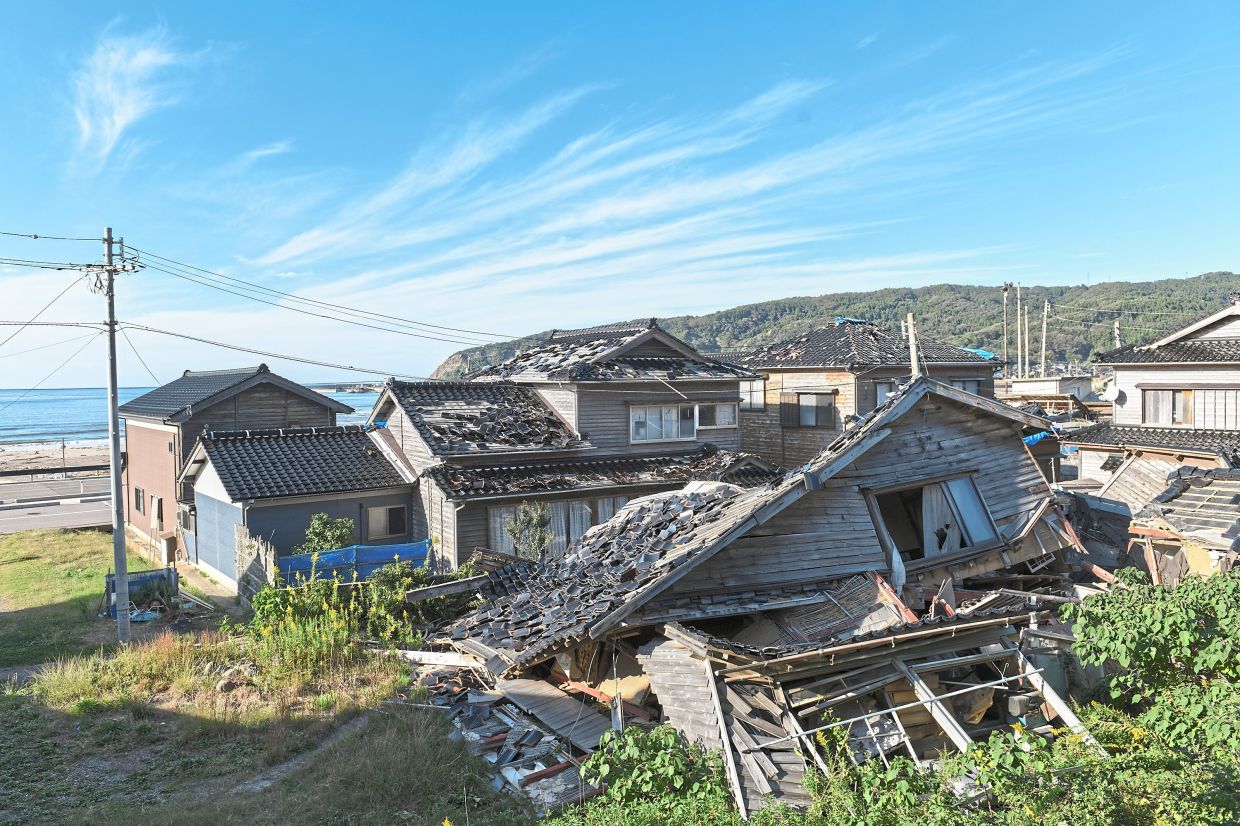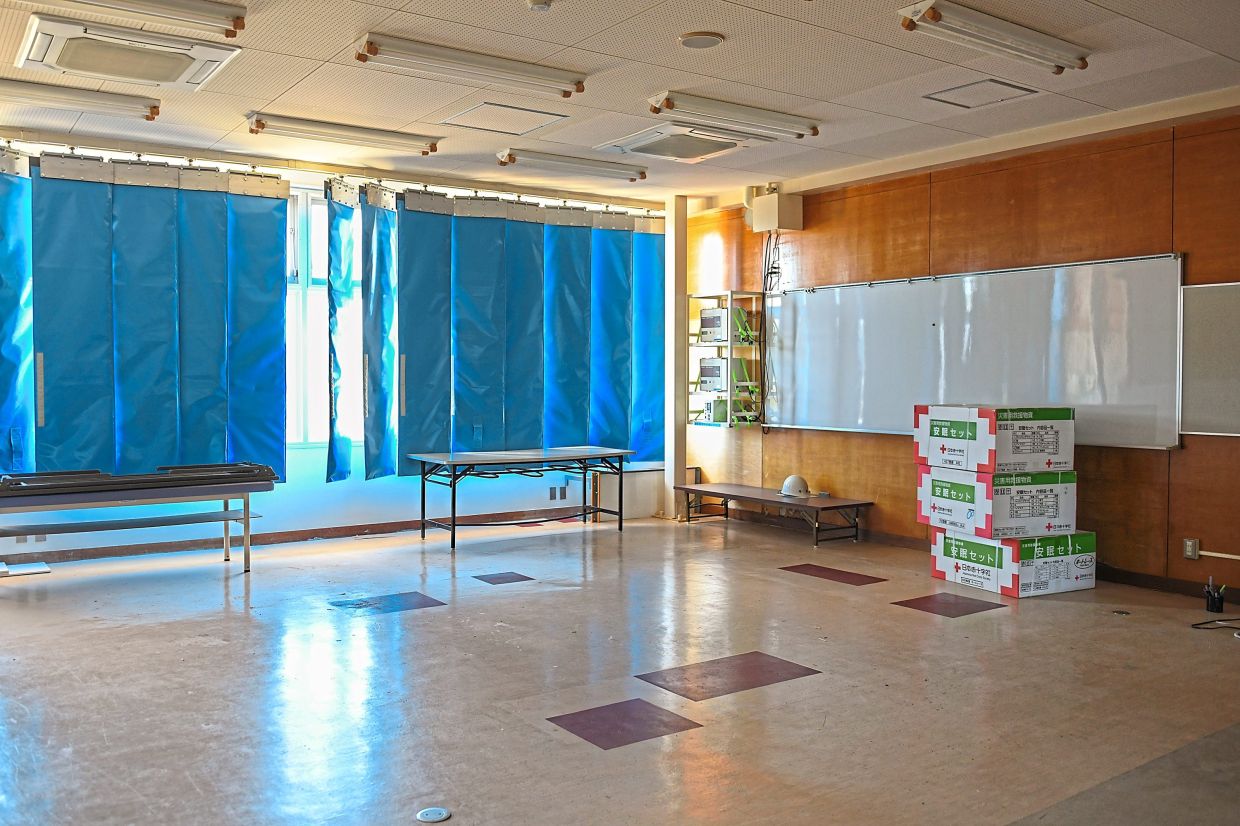Earthquake damaged buildings in Wajima. — ©2024 The New York Times Company
A DECADE after one of the most devastating atomic energy disasters in history, Japan was finally getting closer to reviving nuclear power.
Around 2022, a majority of the public began to express support for restarting the nation’s nuclear plants, most of which have remained offline since an earthquake and tsunami caused a nuclear meltdown in Fukushima prefecture in 2011.
Japan’s governing Liberal Democratic Party, or LDP, pushed forward with plans to not only restart idled plants, but also build new ones.
The long-ruling party made an urgent call to advance nuclear energy, which it said would help the heavily fossil-fuel-dependent country meet growing energy demands and fulfill its pledge to cut carbon emissions.
Then, this year, a series of disasters reminded many in Japan of their deep fears about nuclear energy, and the Liberal Democrats lost its majority in the influential lower chamber of parliament. The fate of nuclear power in the country is again uncertain.
In January, the deadliest earthquake in over a decade struck the Noto Peninsula on Japan’s northwest coast. More than 400 people died, and many buildings were damaged, including an idled nuclear power plant.
In August, a tremor in southern Japan prompted experts to warn that a long-anticipated megaquake, predicted to kill hundreds of thousands, could be imminent.
“With earthquakes erupting across the country, it is so clear that nuclear power is a harm to our safety,” said Hajime Matsukubo, secretary-general of the Citizens’ Nuclear Information Centre in Tokyo. “This was made evident in 2011 and again during the Noto earthquake.”
A poll conducted by Mainichi Shimbun, one of Japan’s major newspapers, a few months after the Noto earthquake revealed that 45% of respondents opposed restarting Japan’s nuclear plants, surpassing the 36% who supported it.
The Liberal Democrats have formed a minority government, but the Constitutional Democrats, who won the second-most seats behind the LDP, strongly oppose plans for Japan to build new nuclear reactors.
Within the next four months, Japan will release a revised energy plan that will define the nation’s target energy mix heading toward 2040.
That means that the nascent government – in whatever shape it ultimately assumes – will be forced to confront two long-standing questions that have proved largely impossible to reconcile.
Is nuclear energy, widely considered clean and affordable, the best option for Japan – a nation heavily dependent on fossil fuels yet prone to frequent earthquakes and tsunamis? And if so, how can government leaders sell this to a populace still haunted by the memories of nuclear disaster?
The Fukushima crisis set back the advance of nuclear energy in many places, from nearby Taiwan to as far away as Germany. But nowhere was the horror felt as personally as in Japan.
Before 2011, nuclear energy made up about 30% of Japan’s power generation. Last year, nuclear power generated a little over 5%.
Today, few places embody the emotion and urgency of the dilemma facing the country better than Shika, a seaside town on the Noto Peninsula.
The local power provider, Hokuriku Electric, has been fighting for a decade to restart a nuclear power plant in the town’s centre.
Of Japan’s 33 operable reactors, Shika’s reactors are two of the 20 that remain halted. At the end of last year, the plant’s restart seemed imminent.
In December, Shika residents elected a new mayor who argued that nuclear plants should be brought back online quickly. Hokuriku Electric had its sights set on January 2026 for the plant to resume operation.
Then, a week after the mayor was elected, the Noto earthquake struck just off the coast, tearing up roads and buildings in Shika and displacing thousands.
The quake caused oil leaks and damaged and dislodged components in the nuclear plant.
There were no reports of major problems like radiation leaks. But after the shaking subsided, residents were left contemplating what might have happened if the plant had been operating.
“We have no idea how big of a disaster it would have become,” said Kenichi Doushita, 69, a part-time rice farmer and a member of the Shika town council. “I don’t want to even think about it.”
Eleven months after the quake, collapsed buildings still line the streets in Shika, and many of the town’s ceramic tile-roofed houses are patched with blue tarps. Doushita was able to return home in September after evacuating in January with his wife and their Shiba Inu, Hana.
“Before the earthquake, there were people who thought the nuclear plant’s restart was inevitable,” Doushita said. “Now I hear people say that they are so relieved that it was stopped.”
Since the earthquake, Shika’s mayor has reversed his stance, telling local media that it would be difficult to promote the nuclear plant’s safety as he had in the past.
Hokuriku Electric no longer has a target date for the plant’s restart.
The power company said in a statement that the Shika plant’s construction had been based on geological surveys that confirmed there were no active faults under the facility. The effectiveness of regulatory standards put into place after 2011 was shown when the reactors came through the Noto earthquake with no safety problems, it said.
Like many analysts, business leaders and government officials overseeing energy policy, Hokuriku Electric believes it is crucial that Japan reintroduce nuclear power.
As in many other countries, energy demand in Japan is surging because of a rise in new power-hungry factories and data centres. Renewables, such as offshore wind, remain costly, and power companies have been slow to roll them out, leaving Japan to fill much of its post-2011 nuclear void with gas and coal.
Given the country’s pledge to achieve carbon neutrality by 2050, “there really is no way around nuclear,” said Robert Liew, director of Asia Pacific renewables research at Wood Mackenzie, an energy consultancy.
In Shika, residents fearful of the white-and-blue towers looming over many of their homes are pitted against others who believe restarting the plant could attract workers and industry to an area facing population decline and rapid ageing.
After the January earthquake, dozens of people in Shika evacuated to a building on a hill that, 20 years ago, was an elementary school. Dwindling enrollment caused it to close, and it was eventually converted into a nuclear disaster evacuation centre.
Sumiko Okamoto, 81, was among those taken to the centre. She spent five days there, in a room secured by three layers of doors and lead curtains designed to block radiation.
For 40 years, Okamoto has operated a small restaurant perched on a cliff in Shika that overlooks a wide expanse of the Japan Sea. She has decorated the inside with a dozen tanks filled with swarms of colourful goldfish.
When the earthquake struck on New Year’s Day, Okamoto was alone in her shop. She said she had immediately thought of the nuclear plant and whether it could withstand the shaking.
Okamoto said she understood why some people wanted the plant restarted but that the prospect made her feel uneasy.
“I wish they could just replace it with something efficient and better – something not harmful,” she said. — ©2024 The New York Times Company









